Using a GoPro camera to create forecast information

Australian company Bitwise Agronomy offers berry growers an AI tool that uses a GoPro camera to create accurate forecast information. It can be attached to any existing farm vehicle. “A lot of factors are difficult to predict, and having the right information is key”, CEO Fiona Turner of Bitwise Agronomy points out.
Ms Turner had been working in the global tech industry for years, but always knew she wanted to get back to her farming roots. In 2016 she and her husband acquired Jinglers Creek Vineyard near Relba in Tasmania, Australia.
“Life was busy, and the vineyard quickly got out of control”, Ms Turner says. “I missed the windows to do certain jobs and it was really stressful – everything took twice as long, and was expensive. It felt like we were ploughing money into the ground rather than being efficient.”
Currently GreenView is being used on more than 70 sites in 11 countries
Ms Turner hired consultants, but soon realised she couldn’t give them the information they needed to actually help her. “I knew there had to be a better way to understand my crop and bring some data-driven structure to my farming, by using technology – sensors, robotics and agtech cameras – to solve some of these problems. So, my co-founder Aran Elkington and I started trialling ideas.”
Text continues below image
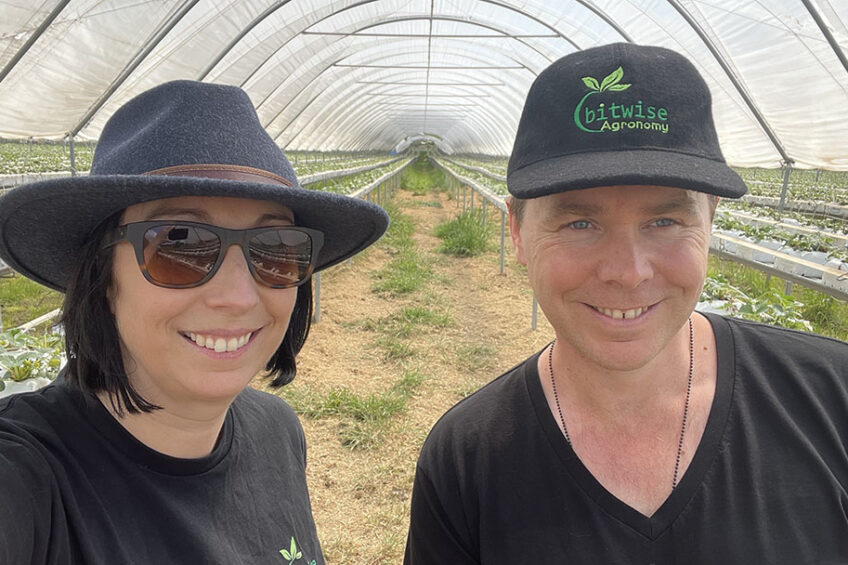
Imagery with a GoPro camera
“We mainly focused on AI and neural networks. After lots of testing and trialling, we had enough data to make it work. I took some initial imagery with a GoPro camera in my vineyard and away we went. When we put the neural net on LinkedIn, in 2018, it just blew up. After months of development, we moved to incorporate Bitwise Agronomy, in late 2019. In March 2020 we brought on our first paid customer, and currently GreenView is being used on more than 70 sites in 11 countries.”
Ms Turner emphasises that farmers face several challenges each season. “A lot of factors are difficult to predict, and having the right information is key. That’s why accurate forecasting is important. Growers need accurate yield predictions to get ahead of their competitors, and to deal with challenges that come with farming. Forecasting is the biggest challenge faced by berry farms, large or small. It relates to all their planning around packaging, staffing, and also selling the fruit to the end customer.”
Text continues below image
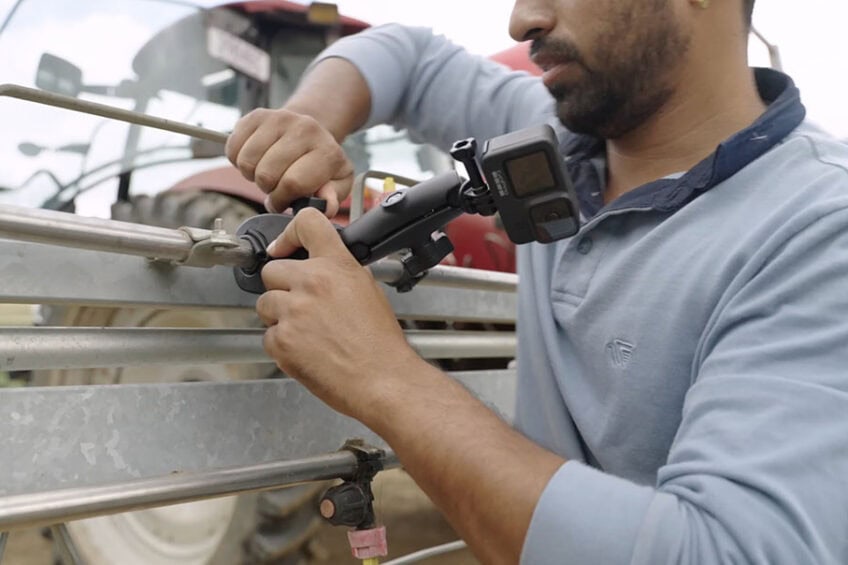
The biggest challenge faced by berry farms
“A berry grower might need to engage early with his marketing channels to maximise sales from an accurate estimate of his production. A grape grower might need to quickly identify a grape shortfall, to purchase excess grapes before others do. And some growers just want to be able to tell their stakeholders how much they expect to produce that year. But trying to measure what’s happening in your crop is time consuming and costly, and often inaccurate. Trying to count by hand can be incredibly difficult, and farm labour is very expensive.”
AI technology can count over 2,000 blueberry plants per hour
GreenView uses AI crop analysis technology that can see like humans – but more accurately, more consistently, and at a superhuman speed. GreenView says its AI technology can count over 2,000 blueberry plants per hour. It uses AI modules to scan and detect berries and categorise them based on ripeness. This allows growers to visualise the entire crop from a bird’s eye view to quickly assess problem areas, and plan when and where farm labour will be needed.
Another challenge for growers is crop variability. Throughout the season a farm could experience variability because of disease, plant age, weather impacts, or water stress levels. Sometimes growers will see high fruiting and low fruiting areas right next to each other in a row.
Text continues below image
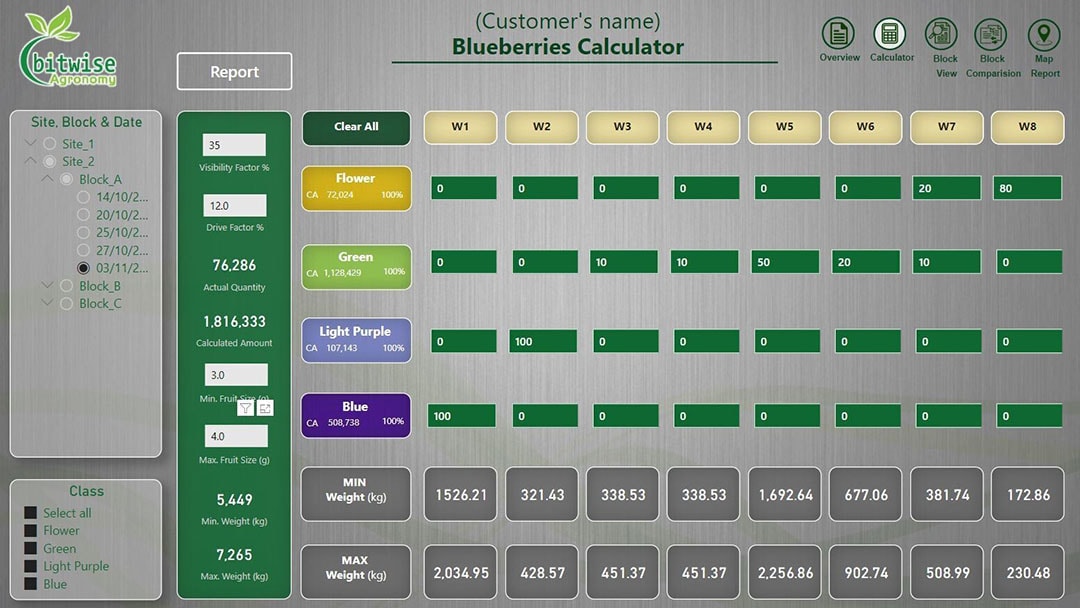
Reduce wastage
Variability and underperforming plants can impact on forecasting and directly affect the bottom line, Ms Turner explains. “The larger the operation, the more noticeable the effect of underperforming areas. Growers can’t manage variability across their sites unless they have accurate information on the crop. By using tools like GreenView, growers can get on top of problems quickly and target treatments before the area gets out of control.”
GreenView’s interactive dashboards and maps analyse growth stages, assess crop health and identify high fruiting and low fruiting areas across the farm. “With GreenView, you can better plan the actions you need to take to get the best harvest possible. Growers can access count data for one to eight weeks into the future, so they can identify the areas that need picking first”, Ms Turner says.
“They can accurately size their picking crew across the entire growing and pruning seasons and pick at the best time. By picking in the perfect window, growers can reduce wastage and limit the need to sell excess fruit at discounted prices.”
Text continues below image
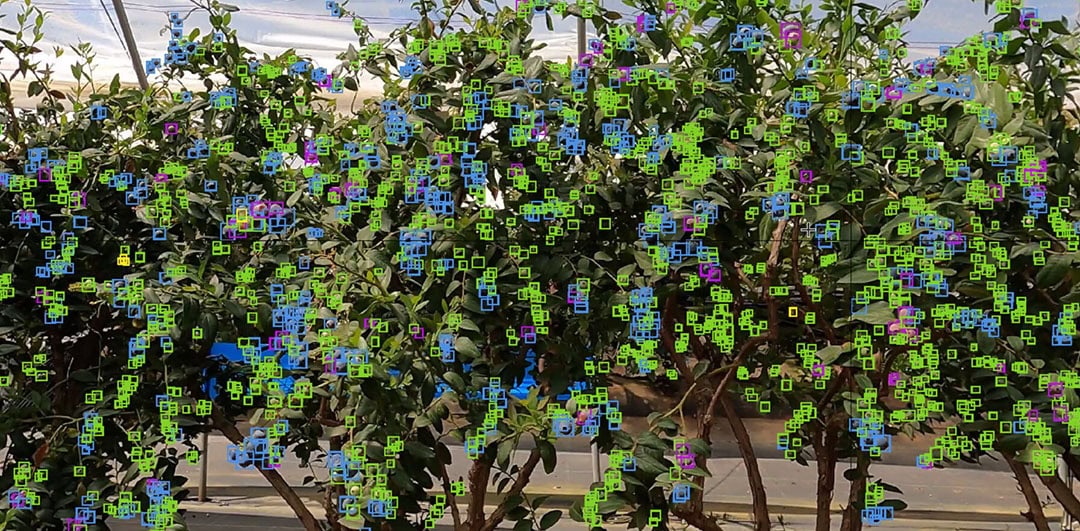
Level playing field
According to Ms Turner, the GreenView technology helps also to level the playing field in the berry industry. New technology is opening opportunities for smaller, less established growers to meet global berry demand.
“Small berry farms or new berry farms often struggle with forecasting if they don’t have the generational farming knowledge and experience to predict yield. Big berry operations have the resources to employ growers and agronomists with decades of experience in the industry and immense knowledge of farming. Most small or new berry operations don’t have these resources.”
Text continues below image
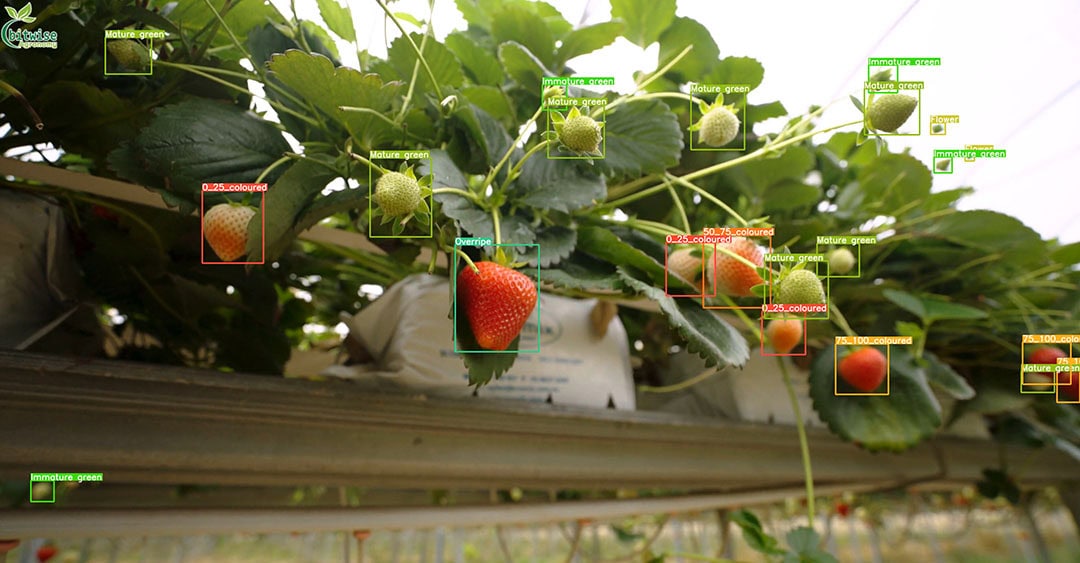
Simple and easy to use
AI tools like GreenView allow growers to dramatically cut down on learning time, Ms Turner says. “Suddenly farmers don’t need years of practical experience walking the rows to make yield predictions. They are able to use crop analysis tools to make data-driven decisions and accurately forecast – all from the farm office.”
The technology is suitable for all commercial berry farms. Bitwise Agronomy currently works with farms that grow strawberries, blueberries, raspberries and blackberries. It also supplies GreenView for grapes (wine grapes and table grapes), as well as for mini cucumbers.
The technology was designed to be simple and easy for growers to use. “We know how busy farmers get. They’re pulled in a million different directions”, Ms Turner says . “So, we make their lives easier.”
Text continues below image
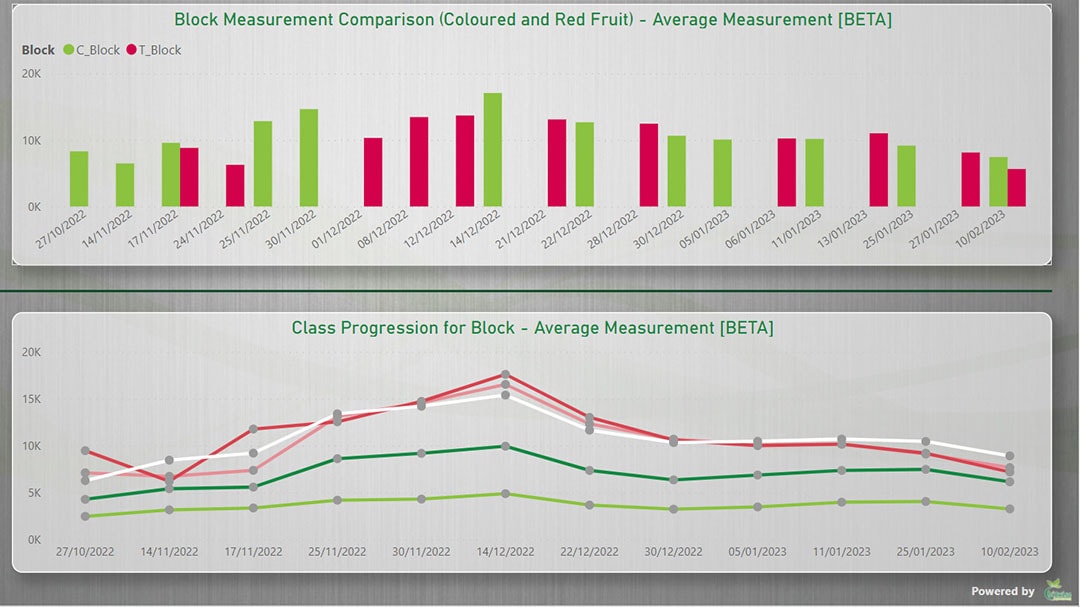
A few steps
It takes growers only a few steps to use GreenView. The first step is to attach a GoPro camera to any existing farm machine, and start to capture side-on video of a crop. Then the footage has to be uploaded. After that, growers can start viewing tailored dashboards and maps – including automated forecasting – within 24 hours. At that time, growers can also begin to make data-driven decisions and gain actionable insights across all seasons.
The costs of GreenView depend on the farm size (hectares). For example, a 30-hectare strawberry farm would pay AUD $ 15,000 AUD (US $ 10,060) per year. GoPros can be purchased online for around AUD $ 800 (US $ 537).
Join 17,000+ subscribers
Subscribe to our newsletter to stay updated about all the need-to-know content in the agricultural sector, two times a week.



